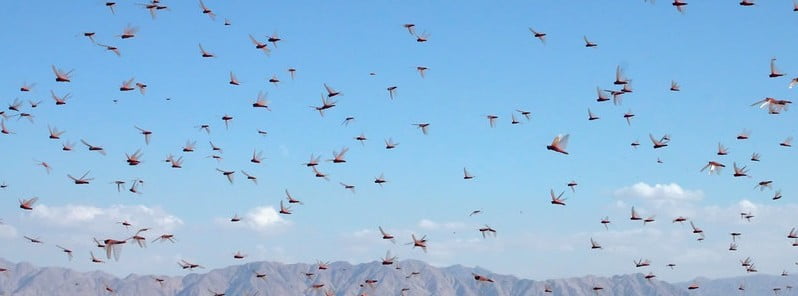South Africa experiencing the biggest locust infestation in decades

The exceptionally wet rainy season in South Africa allowed rapid breeding of brown locusts and led to the biggest infestation the country has seen in decades. In December 2021, many parts of the country experienced the heaviest rains since records began in 1921.
The infestation started in September and is now affecting the provinces of the Eastern Cape, Northern Cape and Western Cape.
“This locust outbreak is the highest in decades as continuous rain is falling in the Karoo and nearby areas,” the country’s Agriculture, Land Reform and Rural Development department said.1
The wind is also playing a role in migrating the swarms to the areas where it was never been such as the
garden route area in the Western Cape and in citrus farms of Kirkwood and Patensie in the Eastern Cape.
It had affected the veld, grazing lands, crops, roads, railway lines and was further reported in towns and
residential areas.
There are ground teams appointed to control the locusts in the three provinces. 1 200 controllers are
appointed, and two helicopters are currently doing the aerial spraying, mostly on inaccessible areas and
where there are huge locust outbreaks.
Areas affected by locust outbreak are as follows:
Northern Cape – 33 districts affected (Britstown, Carnarvon, De Aar, Griekwastad, Groblershoop,
Hopetown, Kenhardt, Netherlea, Loxton, Marydale, Kakamas, Petrusville, Prieska, Upington, Victoria
West, Vosburg, Phillipstown, Hanover, Niekerkshoop, Douglas, Richmond, Springbok, Aggeneys,
Pofadder, Pella, Witbank, Askham, Bladgrond, Calvinia Wes, Dwaalhoek, Kakamas, Koupan, Langklip,
Nounieput, Olifantshoek and Sutherland).
Eastern Cape -13 districts affected (Aberdeen, Graaf Reinet, Somerset East, Pearston, Willowmore,
Jansenville, Rietbron, Stytlerville, Cradock and Middleburg) and newly affected areas such as Kirkwood,
Uitenhage and Patensie).
Western Cape – 6 districts affected (Murraysburg, Beaufort West, Prince Albert, Merweville, Laingsburg)
and new affected areas such Calitzdorp, Ladismith and Oudtshoorn).
References:
1 MINISTER DIDIZA UPDATES THE NATION ON THE OUTBREAK OF BROWN LOCUST
(LOCUSTANA PARDALIN) IN SOUTH AFRICA – April 7, 2022
Featured image credit: Niv Singer

Commenting rules and guidelines
We value the thoughts and opinions of our readers and welcome healthy discussions on our website. In order to maintain a respectful and positive community, we ask that all commenters follow these rules.